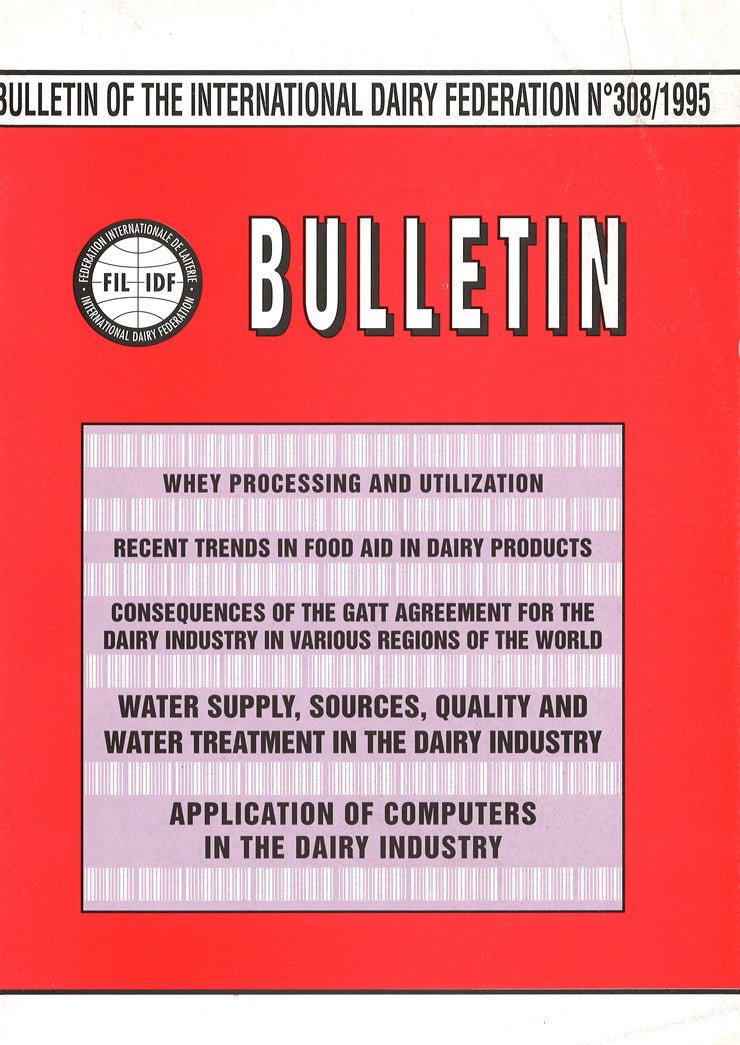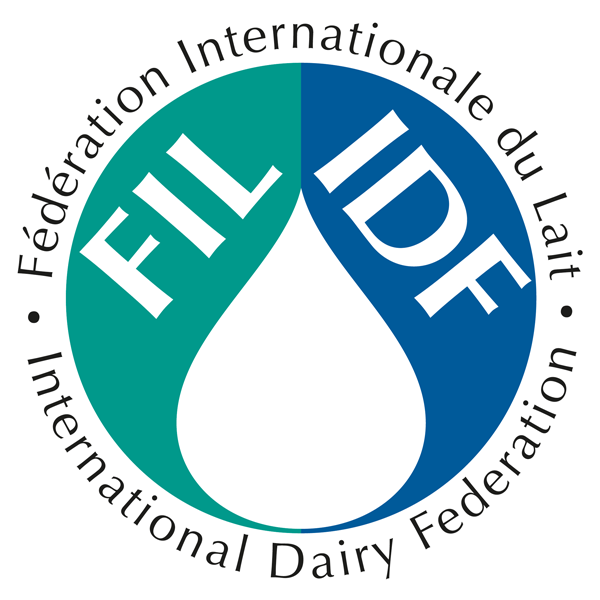Bulletin of the IDF N° 308/1995 - Whey Processing and Utilization - Recent Trends in Food Aid In Dairy Products - Consequences of the GATT Agreement for the Dairy Industry
Couldn't load pickup availability
Document info
| pages | 67 |
|---|---|
| published date | 24 March 1995 |
| reference | Bulletin of the IDF No. 308/1995 |
Publication description
Whey Processing and Utilization
by B.S. Horton (USA)
This report examines the status of whey processing and utilization, the emphasis being on utilization rather than processing in order to highlight the importance of being market driven rather than production driven in the whey business.
5 pp
Recent Trends in Food Aid in Dairy Products
by M. Griffin (Italy)
Although the number of food-aid-sponsored dairy development projects has declined since the mid-1980s, there has been a resurgence in dairy products as food aid (DFA) due to an increase in donations to eastern Europe and the former USSR. However, this is viewed as short-term assistance. It is anticipated that DFA to developing countries will continue to fall, but the possible consequences of the Uruguay Round Agreement remain uncertain.
2 pp
Consequences of the GATT Agreement for the Dairy Industry in Various Regions of the World
by P. Mikkelsen (Denmark)
This paper collects the differing views on the consequences of the GATT agreement. The information presented is the result partly of questionnaires completed by a number of central persons in the regions, and partly of estimates made by dairy organizations in various countries. Together this covers most of the world.
7 pp
Water supply, sources, quality and water treatment in the dairy industry
by J. Hiddink (the Netherlands)
For a dairy factory water is a very important material. In this paper the problems concerning water supply, water sources, quality and water treatment are discussed. In the dairy industry water is used for various applications – a distinction is made between process water, cooling water and boiler feed water. In the second part of the paper the various sources of water supply (mains or tap water, ground water, surfacewater and condensate from evaporators) are treated. Further, the various water treatment processes in the dairy industry are considered – clarification of surface water, removal of iron and manganese, ammonia and nitrite, and various methods for the disinfection of water. Softening and de-aeration of boiler feed water are also given attention. Finally, chemical conditioning of cooling water and boiler feed water is mentioned.
17 pp
Application of Computers in the Dairy Industry
by IDF Group of Experts F14 – Dairy Education This is a revision of IDF Bulletin N°259/1991
Chapter 1 provides a brief introduction to the use of Electronic Data Processing (EDP) for simulation of the cheesemaking process, with an outline of the development of the Danish Cheese Simulator (DCS).
The design of the DCS is based on existing knowledge and the interrelationships that determine the cheesemaking process. Application areas include possibilities for education, research, optimization and product development. There are a lot of facilities for the user of the DCS system which has 40 different screens. Some of the most important screens are described and explained (in relation to the production of Cheddar cheese) in Chapter 2. Some of the mathematical models and their empirical basis with regard to the DCS are briefly described in Chapter 3. Examples of screen copies, with input and output values, are given, along with some examples of how the DCS can be used in experiment planning. Chapter 4 illustrates the use of I.T. in the daily routine of a Norwegian dairy company, combined with some important solutions of I.T. in the top organizations of Norwegian dairies – milk collection, planning production, labelling, distribution, EDI, data collection and optimization of the dairy structure.
Chapter 5 discusses the development and implementation of a programme of computer studies in a dairy education syllabus. While the integration of computer-based applications into all aspects of a general dairy education programme is essential to the success of a computer proficiency course, such a course must be application based, that is, based on the new and potential applications within the dairy sector itself. Finally, in Chapter 6, an integrated computer aided quality assurance system, QUALIFAX, using processing and laboratory data of dairy plants is described.
35 pp


